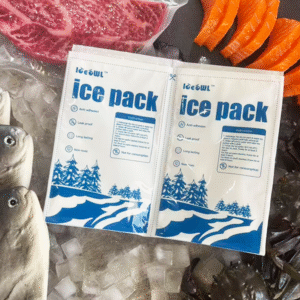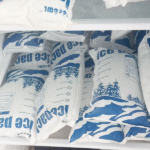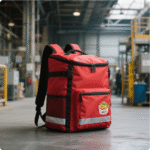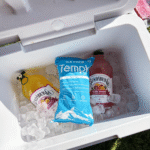Comment emballer la glace sèche pour l'expédition d'air en toute sécurité 2025
Shipping dry ice by air requires careful planning and strict adherence to safety protocols. Un emballage inapproprié peut entraîner une accumulation dangereuse de CO₂ ou des retards d'expédition. Dans ce guide, vous apprendrez à emballer de la neige carbonique selon les 2025 règlements, Assurer la sécurité, conforme, et des expéditions efficaces.
-
Comment calculer la quantité de glace carbonique pour les expéditions aériennes.
-
Quels sont les matériaux et méthodes d'emballage requis?
-
Comment étiqueter et marquer vos colis pour respecter les règles IATA.
-
Tendances et innovations dans le transport de glace carbonique pour 2025.
Quelle est l'exigence de base pour l'expédition aérienne de glace carbonique?
La glace carbonique doit être emballée dans des conteneurs ventilés qui permettent au gaz CO₂ de s'échapper.. Ceci est crucial pour éviter une accumulation de pression qui pourrait provoquer des explosions.. En plus, le colis doit être étiqueté correctement avec le nom d'expédition approprié (“Glace sèche” ou “Dioxyde de carbone, Solide”) et l'ONU 1845 nombre. These requirements are part of the IATA’s Packing Instruction 954 (PI 954), which remains the gold standard for dry ice air shipments in 2025.
What Packaging Materials and Methods Should You Use?
-
Isolation: Use materials like EPS foam or vacuum-insulated panels (VIP) for optimal thermal insulation. VIPs are more efficient but costlier.
-
Ventilation: Ensure that the outer container is not airtight. Use vent holes or leave flaps slightly open for proper gas release.
-
Stratégie de superposition: Place dry ice around the product, separated by protective layers like cardboard or foam, ensuring that the dry ice doesn’t directly contact sensitive goods.
| Packing Element | Recommended Choice | Pourquoi ça compte |
|---|---|---|
| Insulated Container | EPS foam or VIP | Ensures adequate insulation to control sublimation. |
| Outer Box | Corrugated cardboard, plastique | Provides structural strength and meets carrier needs. |
| Ventilation | Built-in vent holes or tape gaps | Prevents dangerous CO₂ buildup from pressure. |
| Separation Material | Carton, foam inserts | Prevents contact between dry ice and sensitive goods. |
Step-by-Step Packing Process
-
Pre-cool your products: Ensure your goods are pre-frozen to reduce thermal load.
-
Choose the right insulation: Select EPS foam or VIP for optimal dry ice retention.
-
Pack dry ice: Place the dry ice around but not in direct contact with the product.
-
Seal and vent the container: Leave small gaps or use vented flaps to allow CO₂ to escape.
-
Étiqueter correctement: Afficher la classe 9 étiquette de danger, «Glace sèche» ou «dioxyde de carbone, Solide,"Et 1845, et le poids net.
Key Regulations for Dry Ice Air Shipments in 2025
Marking and Labeling:
For all shipments, the following must be clearly visible:
-
Classe 9 étiquette de danger
-
Et 1845
-
Poids net de la glace sèche en kilogrammes (kg)
Déclaration de l'expéditeur:
Dans la plupart des cas, when shipping dry ice without other hazardous goods, a full Shipper’s Declaration is not required. Cependant, for shipments containing dangerous goods (DG), a full declaration is needed.
Carrier-Specific Rules:
Different airlines and carriers may impose additional limitations, such as maximum dry ice weight per package or specific requirements for container materials. Always verify with your carrier for route-specific rules.
How Much Dry Ice is Needed for Air Shipments?
To determine the correct quantity of dry ice, follow this formula:
-
Base Sublimation Rate: 5–10 lb par 24 heures, depending on insulation quality.
-
Tampon: Ajoutez toujours 20-25% extra to cover unexpected delays or changes in route conditions.
Par exemple, for a 48-hour shipment, you would need approximately:
-
6 lb/day x 2 days = 12 kg
-
Ajouter 25% buffer = 2.4 kg
-
Total dry ice required: 14.4 kg (~6.5 kg)
Special Considerations for Dry Ice Quantities
-
Passenger Shipments: Seulement 2.5 kg of dry ice per passenger is allowed (with carrier approval).
-
Cargo Shipments: The maximum dry ice allowed is 200 kg par forfait, though airlines may set lower limits.
Dry Ice Air Shipment Documentation
When shipping dry ice, the following documentation is required:
-
Sur Waybill (AWB) avec:
-
Et 1845
-
Nom d'expédition approprié (“Glace sèche” ou “Dioxyde de carbone, Solide”)
-
Poids net of dry ice in kg
-
-
Acceptance Checklist: Suivez le 2025 carrier dry-ice checklist to ensure all regulations are met.
What to Avoid When Packaging Dry Ice
-
Évitez les conteneurs hermétiques: This can cause pressure to build up and lead to ruptures.
-
Don’t skimp on insulation: Une mauvaise isolation accélère la sublimation, increasing dry ice consumption and risks.
-
Ensure clear labeling: Incorrect or missing labels can cause delays or rejections.
-
Don’t ignore carrier-specific requirements: Each carrier might have additional rules—always check before shipping.
2025 Trends in Dry Ice Air Shipments
Systèmes de refroidissement hybrides:
Combining dry ice with phase change materials (PCMS) is emerging as a popular solution to reduce waste and ensure precise temperature control. This is particularly useful for shipments requiring temperatures that dry ice alone cannot maintain.
Emballage intelligent:
Smart sensors integrated into packages to monitor temperature and CO₂ levels are becoming more common, providing real-time data to optimize shipping processes and prevent issues before they occur.
Focus sur la durabilité:
As part of the growing trend for sustainable logistics, eco-friendly refrigerants like biodegradable gel packs and PCMs are being adopted as alternatives to dry ice in some air shipments.
Étude de cas: Biotech Shipment Success
A biotechnology company reduced spoilage by 25% and avoided regulatory violations by switching from traditional tight-sealing coolers to vented packaging kits. This change led to fewer shipment holds and improved on-time delivery within one month.
Questions fréquemment posées
Q1: How long will dry ice last in a properly packaged air shipment?
Dry ice typically lasts 24–72 hours, depending on insulation and sublimation rate. Always factor in a buffer for delays.
Q2: Can I ship dry ice with gel packs in the same package?
Oui. Ensure dry ice is separated from gel packs with protective layers to avoid freezing sensitive products.
Q3: Is a Shipper’s Declaration needed for dry ice shipments?
Only if shipping dangerous goods with dry ice. For non-DG shipments, ensure proper labeling and documentation.
Conclusion and Action Plan
To successfully package dry ice for air shipment, follow these key steps:
-
Use vented, insulated packaging to allow CO₂ gas to escape.
-
Accurately calculate dry ice requirements and add a 20–25% buffer.
-
Label and mark your packages according to IATA 2025 lignes directrices.
-
Stay updated with carrier-specific rules and regulatory changes.
Étapes suivantes:
-
Audit Your Current Packaging Process: Utiliser le 2025 dry-ice checklist.
-
Formez votre équipe: Ensure all staff are familiar with IATA PI 954 exigences.
-
Consider Sustainable Alternatives: Explore the benefits of phase-change materials and smart sensors.
























